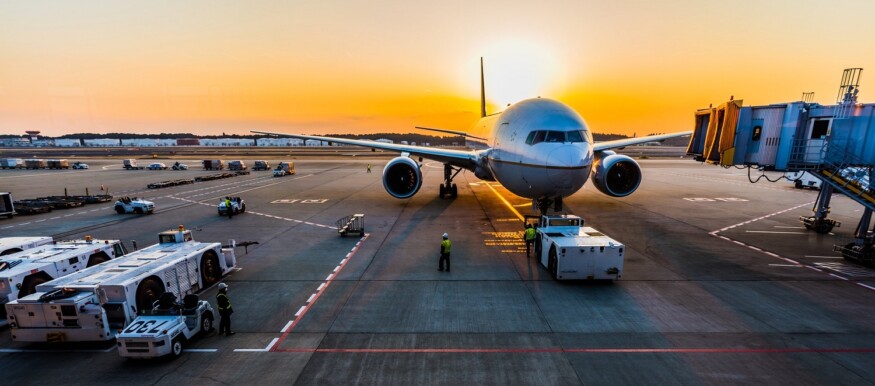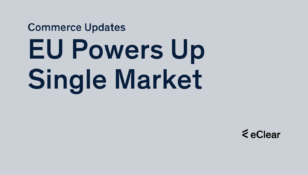Following the implementation of the second part of the VAT digital package, exemption limits or allowances no longer apply. Therefore, import VAT must be charged for each delivery of goods, and a customs declaration must always be required when importing goods into the EU. The IOSS (Import-One-Stop-Shop) can make importing goods up to a material value of EUR 150 easier. However, if the IOSS is not used, the merchant must register in each EU country and pay the taxes to the respective tax authorities.
New regulations for goods valued at less than EUR 150
An electronic customs declaration is required for deliveries with a material value of less than EUR 150. However, duties of less than EUR 1 are not levied. Since the exemption limit of EUR 22 has been abolished, import VAT is now due for every shipment. The import VAT can only be paid in the EU Member State where the transport ends, i.e. at the place of performance. Merchants shipping goods from a third country to various EU countries must register individually in each Member State and pay the tax to the competent authority.
For goods up to a material value of EUR 150 (value of goods + transport costs), the IOSS has been introduced to simplify the tax process. However, if the IOSS is not used, businesses can opt for another special procedure based on the new VAT law, in addition to the standard procedure. This provides flexibility and options for businesses to choose the most suitable tax process.
How is the particular procedure applied?
The new procedure only applies to imports shipped to consumers in the domestic market and does not include goods subject to excise taxes (e.g. coffee, alcohol).
The particular procedure works as follows:
The transporter (carrier, often the postal service provider or courier) collects the import VAT on a month’s imports from the recipient. It pays it to the competent customs authority in the following month.
This special scheme simplifies the process for merchants, offering the following advantages:
- The transporter efficiently handles the customs declaration and ensures that the delivery is released for free circulation in the EU on behalf of the recipient.
- The transporter collects the import VAT from the recipient upon delivery and then pays it to the customs authority within the approved deferral of payment framework.
- The transporter provides information to the customs authority regarding the delivered goods, the amount of import VAT collected, consignments awaiting delivery, and undeliverable or lost consignments. In case of doubt, the transporter must also verify the whereabouts of a delivery.
Merchants who choose not to use the special regulation or who send goods to EU Member States apart from Germany must declare the delivery of goods to the customs authorities, collect the import VAT from the recipient, and pay the tax to the competent tax authorities in the respective Member State.
Example: Smith, a merchant based in Turkey, supplies clothing in consignments valued at less than EUR 150 from Ankara to consumers in Germany and France. When declaring the goods to customs, Smith can apply for a special arrangement for his deliveries to Germany. In this case, the transporter of his consignments will collect the import VAT from the recipients and pay it in a lump sum to the competent authority on the due date.
This procedure does not apply to his shipments to France. In this case, Smith must register and pay the import VAT himself.
When are distance sales of less than EUR 150 exempt from import VAT?
Since July 1, distance sales of goods imported into the EU from third-country territories in consignments valued at less than EUR 150 have been exempt from import VAT if an identification number is provided with the customs declaration. The respective Member State issues this identification number. The taxable merchant and the transporter each receive an identification number. The transporter often works for several taxable merchants and gets a separate identification number for each.
Merchants who handle delivery and customs declaration themselves must enter their identification number. If a transporter acts on behalf of the merchant – which is typically the case – he must provide the identification number assigned to the merchant.
Participation in this special taxation procedure is crucial and must be registered in advance by the merchant or transporter with the competent tax authority. In Germany, this is the Federal Central Tax Office. Timely registration is key to ensuring a smooth and hassle-free process.
What happens when the value of the shipment exceeds EUR 150?
Understanding the IOSS and the special regulation on import VAT is crucial when the value of a delivery from a third country exceeds EUR 150. The new distance selling regulations do not offer any special conditions or simplified options. The merchant’s first step is to declare the shipment of goods to customs for release for free circulation in the EU. The duties based on the respective customs rate are payable in this customs office.
Given the absence of special regulations, it’s important to note that the import VAT for a third country import is also due at the respective VAT rate (7% or 19% for Germany). This tax must be collected from the recipient and promptly paid to the competent tax authority. The import VAT is only levied on imports from third countries into the EU and is usually the same as the standard VAT. This measure is in place to prevent goods from being sold without VAT, as they are exempt from VAT in the exporting country.
As you know, the tax must be declared and paid in the EU Member State where the transport of goods ends (country of destination). Accordingly, a separate customs declaration and tax payment to the competent authority are required for each Member State to which goods are delivered. However, import duties of less than EUR 5 are not levied.
Example: Seifert, an Australian merchant, sells smartphones valued at EUR 750 to EUR 1,000 to consumers in the Netherlands, Italy, and Sweden. Since these shipments exceed EUR 150 in value, Seifert is not eligible to take advantage of any special regulations. The company must, therefore, declare the deliveries in each of these countries, collect the import VAT, and pay it to the competent authority in the Netherlands, Italy, or Sweden.
Where are merchants needed to take action?
If the special regulation for the payment of import VAT is to be applied to imports with a value of less than EUR 150 from third countries into the EU, the transporter must submit a request to the customs authority. However, the special regulation only applies if the delivery is made within the specified domestic market, i.e. to Germany, and does not contain any goods subject to excise duty.
The import of goods with a consignment value of less than EUR 150 from third countries into EU Member States is also exempt from import VAT if the merchant’s (self-declaration) or transporter’s identification number is specified in the customs declaration. Participation in this special scheme must be registered in advance by the merchant or the transporter with the competent tax authority in the respective Member State. The respective Member State issues the individual identification number. In Germany, the competent authority is the Federal Central Tax Office.
Otherwise, the merchant must declare the delivery of goods to the customs service and pay the import VAT to the competent tax authority for each Member State.
Keep a clear overview of products from eClear
Gaining insight into the new IOSS regulations and special import VAT procedures while ensuring customs and import VAT declarations are correctly submitted can be complicated and time-consuming. eClear offers two practical solutions.
The eClear CustomsTariffs solution is a game-changer. It consolidates the rates for millions of products in the EU 27 (plus CH, UK, NO, and IS) in a constantly updated database. Integrated directly into your shop or system architecture, the software calculates customs or import VAT charges and displays them in real-time in the respective national currency. The standout feature? Our unique EU-wide TAX Engine ensures that all exceptions and reduced tax rates are considered in the calculation.
Customs clearance is completely automated with the full-service ClearCustoms solution. Consumers can see the import duties and fees at checkout, and the integrated payment module handles disbursement. Registration of the merchant in the country of destination is not required. eClear serves as the ‘importer of record’ vis-à-vis the authorities and assumes all rights and obligations regarding customs.
Merchants from a third country can supply their customers with the Incoterm “DDP (Delivered Duty Paid)”.







